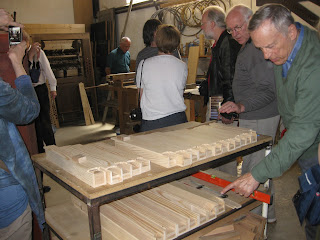The book, Korea, Are You at Peace, has had a “soft launch,” appearing in time
for October sales. However, there was little or no publicity except for what I
tried to do on social media. Publicity—and hopefully marketing—for the
book will finally be underway this coming week. The Kirkus Review for the book
is now out, quoted below.
“Simson (The God that Says I
Am, 2010) intertwines a well-documented travel memoir with geography,
history and culture.
"When biologist Simson was
offered a contract to teach on American military bases in South Korea via the
University of Maryland University College Overseas Division, she was excited to
explore a culture much different than that of her hometown of Charleston, S.C.
The end result is this compelling narrative in which Simson compares her
modern-day experiences in South Korea to those of Victorian travel writer
Isabella Lucy Bird Bishop. Both women were 63 when they began their journeys—Bishop
in 1894, Simson in 1999—and though Bishop traveled with the aid of missionaries
and Simson’s two-year stint involved navigating confusing streets in used cars,
both women went home with a deep admiration for many of the people they met
along the way.
"While Simson presents a
condensed history of Korea’s troubled past and a vivid account of her trip to
the Demilitarized Zone, she also offers many glimpses of her day-to-day life in
places like Songtan and Taegu, including descriptions of Korean food such as a
delicious pajeon (onion pancake). Of course, some culture shock is to be
expected, and Simson describes the difficulties she encountered with the Korean
language and weather-related problems, like the time her car broke down in a
monsoon. The author writes that though neither she nor Bishop was fond of large
Korean cities, they both reveled in the magnificent beauty of the countryside and
mountains. (Generations ago, Bishop was able to explore the Diamond Mountains, now
part of North Korea.) As in any culture, there are paradoxes, and Simson
portrays them with a nonjudgmental but honest voice; for instance, the same
people who drove recklessly and always seemed to be in a hurry were also industrious
and quick to help her. Likewise, the same culture in which she saw women mistreated
also held a deep reverence for its elders. Various religious influences—nature
worship, shamanism, Taoism, Buddhism, Confucianism and Christianity—are also
briefly discussed with notable objectivity.
"Serious travel readers will
appreciate Simson’s gentle, evenhanded presentation of a colorful, multifaceted
culture.”
Kirkus Indie, Kirkus Media LLC,
6411 Burleson Rd., Austin, TX 78744; indie@kirkusreviews.
The book is available through Amazon (image on sidebar) or through the publisher at http://bookstore.abbottpress.com/Products/SKU-000650588/Korea-Are-You-at-Peace.aspx
Also, please visit (and "like") the author's page on FaceBook. https://www.facebook.com/javsimsonwritinglife?ref=hl



















































